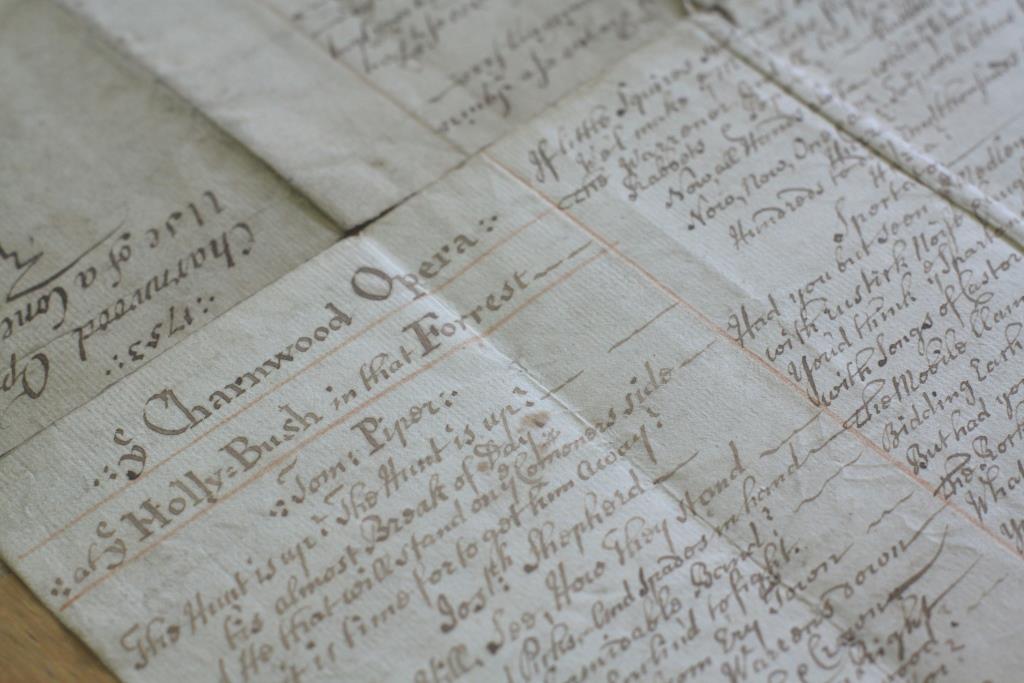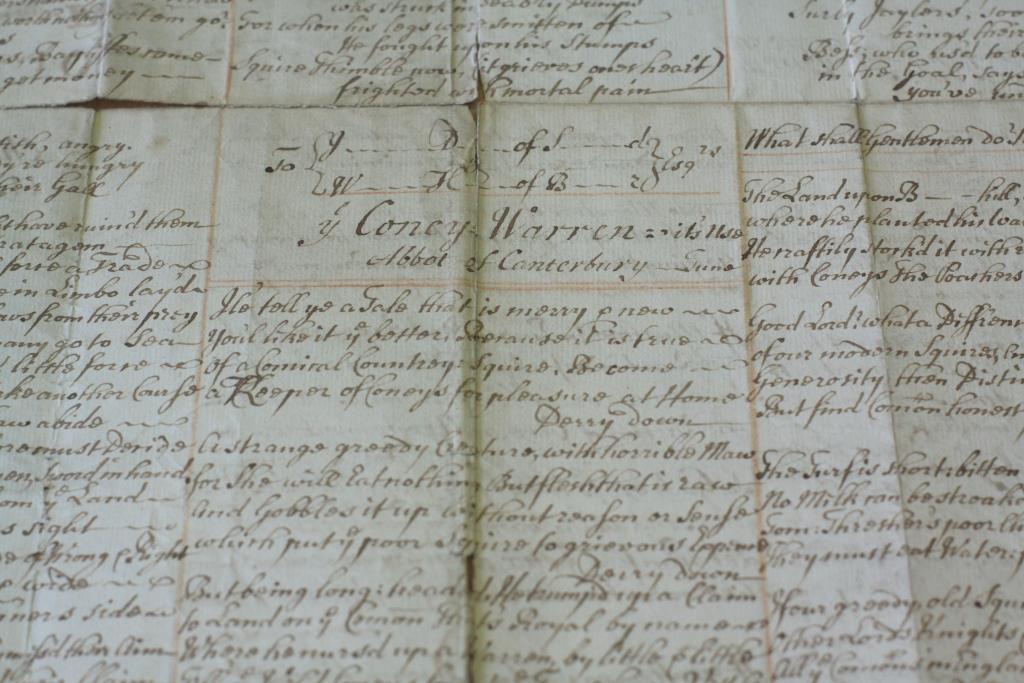Discovering an unknown opera
With such vast and varied collections, we sometimes come across hidden treasures. Adam Lines, Reading Room Supervisor, tells us about a discovery he made recently.
One of the most invigorating aspects of my role as Reading Room Supervisor is the wealth of knowledge about the collection that I accumulate on a daily basis. Often researchers draw my attention to the significance of items in the collections through their enthusiasm for, and knowledge of, their subject.
A few weeks ago I received an email from an academic eager to see the original manuscript of a mid-eighteenth-century performance piece called ‘The Charnwood Opera’. They supplied the file number, D MS 1093/12/19, and I set about retrieving the manuscript. When I looked up the file number in the catalogue, the description offered was simply ‘documents related to enclosure’ – nothing, at first glance, directly referenced ‘The Charnwood Opera’. Upon finding the folder I found an envelope and as I carefully emptied its contents I discovered the manuscript I was looking for.

Measuring approximately 39×31 cm, this manuscript is the only known surviving copy of ‘The Charnwood Opera’. It is dated 1752 and was written by an unknown author. The piece was written as a protest against a local landowner, William Herrick, who attempted to enclose areas of common land in Charnwood Forest in Leicestershire and develop rabbit warrens for private use. It is an entirely unique piece of contemporary evidence in song of the rural struggles against enclosure. The manuscript suggests that it might have been performed at a tavern in Charnwood Forest known as the Holly Bush.

Although set in the immediate context of William Herrick’s attempts to enclose common land in Charnwood Forest, at the time the piece was written around half of the villages in the county had been enclosed and ‘The Charnwood Opera’ encapsulates this county-wide unrest. During the early eighteenth century, nine out of ten people lived and worked in the countryside. For them, the difference between cultivated (private) and uncultivated (common) land was more meaningful than that between the town and the countryside. For the commoners, enclosure meant becoming labourers and working for wages whilst their traditional livelihood of catching rabbits was outlawed. ‘The Charnwood Opera’, through a mixture of seven songs and dialogue, plays out the events of the confrontation between warreners and commoners. When a bribe offered by the gentry fails, many of the commoners are arrested and the landlord turns to hired thugs to pacify them. The piece concludes with the commoners anticipating further troubles ahead.

How did a performance piece related to the enclosure of land in Leicestershire find its way to Reading?
The manuscript is one of hundreds of documents that form part of the William Tate (1902-1968) archive. He was a much celebrated historian and antiquarian, called many things from a ‘scholar’ to a ‘maverick’. He had many academic interests, but his main passion was for the history of enclosure in England and he spent over thirty years researching and compiling the details of enclosure for all English counties. What Pevsner is to buildings, Tate is to enclosure acts. Much of his collection of papers was deposited at the University of Reading by his wife after his death, including many manuscripts of unpublished works.
And it was this very archive that presented the treasure I discovered tucked away in an envelope. It is thought that William Tate first discovered it when a bookseller in Nottingham alerted him to its presence when he found it loose in a book. Whether Tate was aware of its significance is unknown, but he was clearly fascinated enough by it to save it.
You can find out more about the William Tate archive here.
Thank you to Gerald Porter for sharing his research and for shedding light on such a fascinating piece of rural history.
Porter, Gerald and Tiusanen, Jukka (2006) ‘Performing Resistance to the New Rural Order: An Unpublished Ballad Opera and the Green Song,’ The Eighteenth Century, 47 (2): pp.202-232.
3 thoughts on “Discovering an unknown opera”
Leave a Reply
You must be logged in to post a comment.

This would make an interesting stage production.
And you can read all about it in Gerald’s chapter in ‘Rhythms of Revolt: European Traditions and Memories of Social Conflict in Oral Culture’. Just published by Routledge
https://www.routledge.com/Rhythms-of-Revolt-European-Traditions-and-Memories-of-Social-Conflict/Guillorel-Hopkin-Pooley/p/book/9781138205048
This could be the next production for the MERL Players?